A School of the Wise among the Unwary
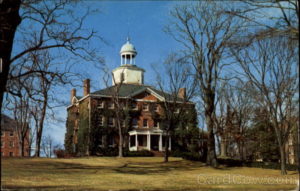
McDowell Hall, St. John’s College Annapolis
In the center of Annapolis, the capital of Maryland, is nestled a lovely campus with tall sycamore trees and rolling emerald fields. St. John’s College sits above College Creek and across the street from the gray wall of the United States Navel Academy. August brick buildings and a main hall with a domed bell tower make it a place that is restful to the eye. Not far from the campus, a few blocks downhill, rests the Annapolis Harbor, with its boats and sailing ships.
All in all it is a pleasant place conducive to study.
This school, innocently hidden among the Unwary, is in truth a branch of Roanoke Academy’ for the Sorcerous Arts’ Dee Hall, the dormitory devoted to the study of the Scholarly Art. This fact is so hidden, that even the students and most of the faculty do not know this.
However, one has only to walk among the classrooms and examine the curriculum to discover the similarities. Founded in the 1930s by two students from Dee Hall, who wished to bring some of the rigor of the Scholarly Art (one of the seven Sorcerous Arts) to the mundane population, St. John’s College is the closest a mundane can come to experiencing life at Roanoke Academy. (St. John’s College in Annapolis later opened a sister campus in Sante Fe, New Mexico, which also runs along the same principles as its Annapolis sister.)
Here are some examples of similarities:
Core Groups – Like Roanoke Academy, students at St. John’s are sorted into core groups, small groups containing a handful of students who all attend the same classes. This means that if a student forgot the homework assignment, there is always someone to ask.
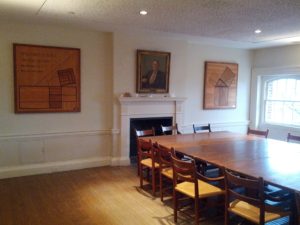
Roanoke or St. John’s? Who can tell?
Class Rooms – The classrooms at St. John’s are identical to the classrooms at Roanoke, so much so that, upon seeing a picture of a classroom, no one not intimately familiar with both could be able to say at which school the picture was taken.
Both institutions have classrooms with a central, large wooden table around which students sit. One side of the classroom has black boards, or, occasionally, white boards upon which the teacher can demonstrate problems or write assignments. This arrangement encourages discussion and sharing of ideas among equals far more than the traditional arrangement of desks in a row facing the front of the class.
Tutors – calling instructors tutors rather than professors is a tradition upheld at both campuses. While occasionally used in English schools, this tradition is not common in America.
 Original Sources – Both Roanoke and St. John’s cherish truth and learning among their highest values. One practical outcome of this is that, wherever possible, original works are studied, rather than text books regurgitating someone else’s opinions about what these works might say. Students read the original works of poets, scientists, philosophers, and more, and thus learn to draw their own conclusions about these works.
Original Sources – Both Roanoke and St. John’s cherish truth and learning among their highest values. One practical outcome of this is that, wherever possible, original works are studied, rather than text books regurgitating someone else’s opinions about what these works might say. Students read the original works of poets, scientists, philosophers, and more, and thus learn to draw their own conclusions about these works.
Reading Works In Chronological Order – The emphasis on True History at Roanoke Academy has led to a curriculum that is organized in a chronological manner, with many subjects being taught with an eye to the historical timeline and how one discovery led to another.
St. John’s also uses this model. Philosophy and literature are read and discussed according to a chronological model, so that the student follows the “Great Conversation” of the Western world.
Lectures – Friday night lectures, with intriguing speakers coming to hold forth on many fascinating subjects, is a staple at St. John’s College. Before the Terrible Years, Friday night lectures were also part of life at Roanoke Academy. Efforts are in place to restart this feature at Roanoke, hopefully within the next year or so.
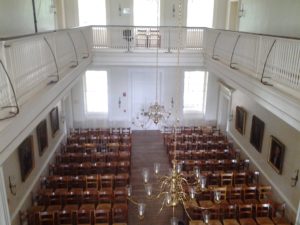
The Great Hall, where Freshman Chorus is held. Similar to the room at Roanoke.
Freshman/Sophomore Chorus – The concept of a class-wide chorus is another feature shared by Roanoke and St. John’s. In this class, all members of the given year are automatically part of a single choral body that meets once a week.
At St. John’s, this class is held once a week during a student’s freshman year at the facility and is part of the music tutorial. At Roanoke, where the choral instruction includes how to perform large group enchantment spells, the chorus is held during the upper school’s sophomore year, as freshman who know no enchantment at all are not experienced enough to perform complicated group enchantments.
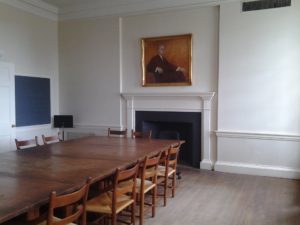 Don Rags – This biannual reporting system, borrowed from Oxford by Roanoke and carried onto St. John’s by its founders, requires students to sit and listen as their tutors discuss them in the third person, debating their achievements and behavior in class. While unnerving to the students, most students from both institutions agree that they prefer don rags to impersonal report cards, as they come away with a much cleared idea of their strengths and weaknesses.
Don Rags – This biannual reporting system, borrowed from Oxford by Roanoke and carried onto St. John’s by its founders, requires students to sit and listen as their tutors discuss them in the third person, debating their achievements and behavior in class. While unnerving to the students, most students from both institutions agree that they prefer don rags to impersonal report cards, as they come away with a much cleared idea of their strengths and weaknesses.
Intramural Athletics Program – Both Roanoke Academy and St. John’s College have an almost entirely intramural sports program. Freshman are assigned to teams, and anyone can show up to play any sport at any time. Sophomore year, the returning Freshman players are drafted onto teams, with those who did the best for their teams during their Freshman year being chosen first. The student then remains a member of this team for life and can return, even as alumni, and play any sport they wish with their team. (Note: the woman’s sports teams are now organized slightly differently at St. John’s, but Roanoke continues with the original system.)
There are a few exceptions. Both Roanoke and St. John’s have a fencing team that plays other colleges, and Roanoke has a traveling Flying Polo team that requires tryouts. Also, Roanoke often participates in a Field Day at the end of the year, where a number of institutions of the Wise get together and compete at their favorite sports.
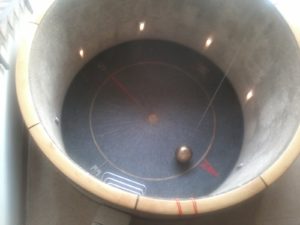
The Pendulum
Balls – unlike most modern institutions, St. John’s still continues to follow Roanoke’s tradition of balls with waltzing and swing dancing. During such events, young men and women in handsome suits and beautiful gowns float around a dance floor to the glorious strains of The Blue Danube and other classic pieces. It brings a touch of the glamour and grace of the ancient world to life within these scholarly walls.
Most important of all, however, is the similar atmosphere – a sincere respect for learning and scholarly pursuits that is held in common by both institutions. St. John’s College truly maintains the love of truth and search for knowledge that were instilled in it by its founders, who sought to reproduce the qualities that made Dee Hall’s scholars among the best and the brightest.
Outside of the World of the Wise no better institution is available to lovers of truth and knowledge that St. John’s College.
For more about St. John’s College in Annapolis and Santa Fe
For more about Roanoke Academy for the Sorcerous Arts
For more about the Books of Unexpected Enlightenment (which feature Roanoke Academy.)

Leave a comment